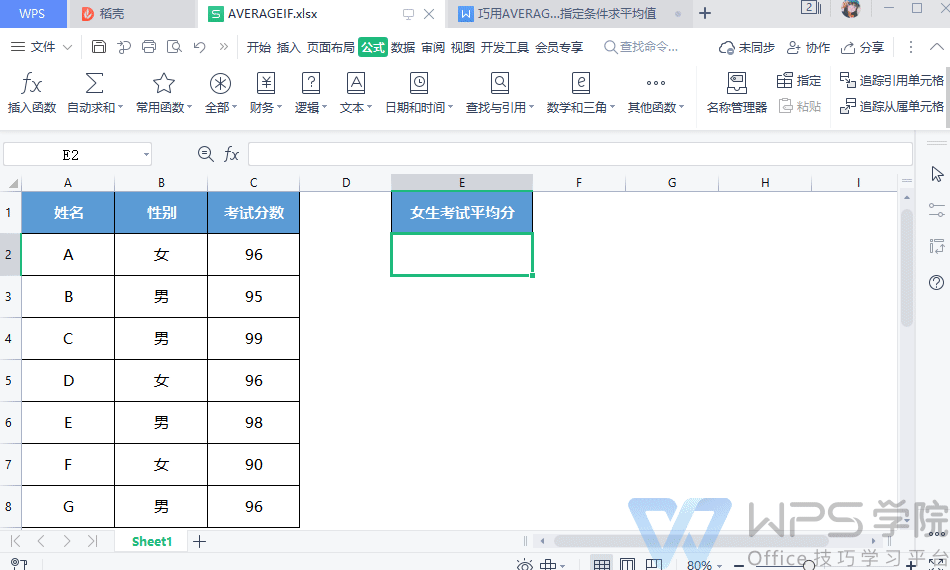- Picture and text skills
- Case
Returns the average (arithmetic mean) of all cells within a range that meet the given criteria.
Grammar
AVERAGEIF(range, criteria, [average_range])
AVERAGEIF function syntax has the following parameters:
■ Range: Required, one or more cells to average, which contain a number or a name, array, or reference that contains a number.
■ Criteria: Required, a condition in the form of a number, expression, cell reference, or text that defines the cells for which the average will be calculated.
For example, the condition could be expressed as 32, 32, >32, Apple, or B4.
■ Average_range: Optional, the actual group of cells to calculate the average. If omitted, range is used.
Description
■ Ignore cells in the range that contain TRUE or FALSE.
■ If the cell in average_range is an empty cell, AVERAGEIF will ignore it.
■ If range is a null value or a text value, AVERAGEIF will return the error value #DIV0! .
■ If the cell in the condition is an empty cell, AVERAGEIF will treat it as a 0 value.
■ If there are no cells in the range that meet the condition, AVERAGEIF will return the error value #DIV/0!.
■ You can use wildcard characters, namely question mark (?) and asterisk (*), in your criteria. A question mark matches any single character; an asterisk matches any string of characters.
If you want to find an actual question mark or asterisk, type a tilde (~) before the character.
■ Average_range does not need to be the same size and shape as range.
The way to determine the actual cells for calculating the average is to use the upper left cell in average_range as the starting cell, and then include the cells with range
Cells of corresponding size and shape. For example:

■ Average: The average is the arithmetic mean calculated by adding a set of numbers and dividing them by these The number of numbers is calculated.
For example, the average of 2, 3, 3, 5, 7, and 10 is 30 divided by 6, which is 5.
Note: The AVERAGEIF function is used to measure central tendency, which is the center position of a group of numbers in a statistical distribution.
There are three most commonly used measures of central tendency:
■ Median: The median is the number in the middle of a set of numbers; that is, half of the numbers have values greater than the median, and the other half have values greater than the median. The value is small.
For example, the median value of 2, 3, 3, 5, 7, and 10 is 4.
■ Mode: The mode is the most frequently occurring number in a set of numbers.
For example, the mode of 2, 3, 3, 5, 7, and 10 is 3.
■For a symmetrically distributed set of numbers, these three measures of central tendency are the same.
■For a set of numbers with a skewed distribution, these three measures of central tendency may be different.
Articles are uploaded by users and are for non-commercial browsing only. Posted by: Lomu, please indicate the source: https://www.daogebangong.com/en/articles/detail/ru-he-shi-yong-AVERAGEIF-han-shu.html



 支付宝扫一扫
支付宝扫一扫 
评论列表(196条)
测试